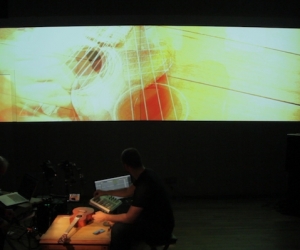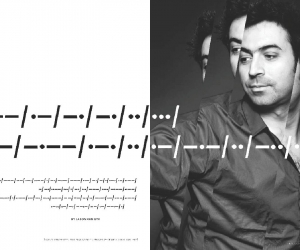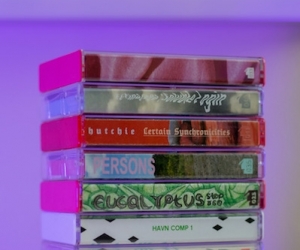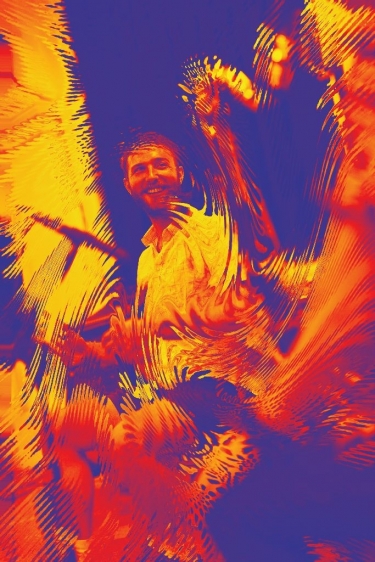
Luke Nickel has written me a piece.
No, wait.
That’s not quite right.
Luke Nickel has left me a series of sometimes vague, sometimes specific instructions via audio recordings of his voice, which I am only allowed to listen to once, so that I might create a piece.
Confused? Let me explain.
Over the course of almost two months in 2018, Nickel and I worked together to create his new piece for solo bass clarinet, A Hushed Workshop. Once every fortnight or so, Nickel would upload an eighteen- to twenty-minute audio file. After I listened to it, he’d delete the file. These audio transmissions contained different instructions and important information related to the work: sometimes they were poetic descriptions of a quiet, dark room at night, full of mysterious machines; sometimes they guided the kind of playing techniques he wanted me to use; and sometimes they were related to the structural integrity of the work. In the days between the transmissions, it was my job to consider what he had said, commit it to memory, and explore the concepts and techniques through the bass clarinet.
By relying on the creative imagination and the memory of the performers he works with, Nickel’s work embodies an ideal of performer–composer collaboration: he does not hear the piece until a relatively late stage in its rendering and, in fact, actively avoids imagining just how it will sound. He puts an enormous amount of trust in the performers of his music.
Nickel calls these pieces “living scores.” His first, [factory], a solo violin piece written for Canadian performer and new-music advocate Mira Benjamin, was a series of written instructions, which Benjamin was permitted to read only once. Nickel has since written other pieces in similar ways, further experimenting with different ways of collaborating without a score, and making use of the performer’s memory. He wrote pieces for Montreal-based ensembles Quatuor Bozzini and Architek Percussion by delivering the text via live conversation. His pieces for the vocal group EXAUDI, Thin Edge New Music Collective, and pianist Everett Hopfner employed the same audio-transmission method as his piece with me.
Approximately four years ago, Nickel and I were introduced online by Canadian composer Thierry Tidrow, a mutual friend. They had once been students together in Montreal, and continued to follow each other’s work. Some years passed, during which I was vaguely in touch with Nickel, but we made no immediate plans to work together. In the meantime, I was spending more and more time in London and had started to consider moving back there. At a concert in the city, I ran into the British composer Laurence Crane. We struck up a long conversation, over the course of which he told me about Nickel, whom he was mentoring for the aforementioned project with vocal group EXAUDI. He described Nickel’s working method to me, and mentioned some of the difficulties Nickel was having experimenting with alternatives to traditionally notated scores.
When Nickel was starting his Ph.D., supervised by James Saunders at Bath Spa University in the U.K., he was excited about his ideas for pieces he wanted to write, but doing very little notating. He was struggling with a question many composers struggle with: What were his priorities as a composer? He was interested in the conceptual ideas behind his pieces and loved working on them with performers, but wasn’t attached to their specific notation. He wanted more flexibility around the timing of individual musical events, and notation left things far too concrete. He experimented with graphic and text-based scores.
The idea of working with memory was a spontaneous decision. He wrote [factory] for Mira Benjamin as a text score, and only at the last minute, before sending it to her, did he decide to ask her to read it only once. He toyed with the idea of asking his friends to act as “archives” for his pieces. He described the piece in detail to a friend, and then if anyone else wanted to perform the piece, a conversation with the “archive” would be necessary. He had to try something new when working with the Bozzini Quartet, because they insisted on working with him, not a third party. He there delivered his transmissions live, but this posed some problems: the musicians asked questions which made it difficult for Nickel to set boundaries; and how they reacted musically and what they remembered depended on how individual musicians were feeling in the moment.
The digital audio transmissions were the perfect solution: musicians could choose for themselves how and when they did their listening, they couldn’t ask questions—and Nickel himself loved the process of building the audio files and sculpting the spoken text. It also made it easier to space the transmissions: taking at least a week between each was helpful for the memory and musical development. He went on to write the pieces for EXAUDI and Everett Hopfner using this method, before turning to our piece.
I personally found this way of working uniquely challenging but extremely rewarding. The result of his process is a piece that allows me to be creative in a way that a more prescriptive written score would not: a piece that feels very much me. It’s also completely idiomatic to the bass clarinet, and makes use of some of my favourite ways of playing, making it a pleasure to play.
Throughout the process of creating the work, I kept a detailed diary of my experiences and thoughts, concerns about my memory lapses, gleeful discovery of new sounds, frustrations with my ability to focus, and eventual assembly of A Hushed Workshop.
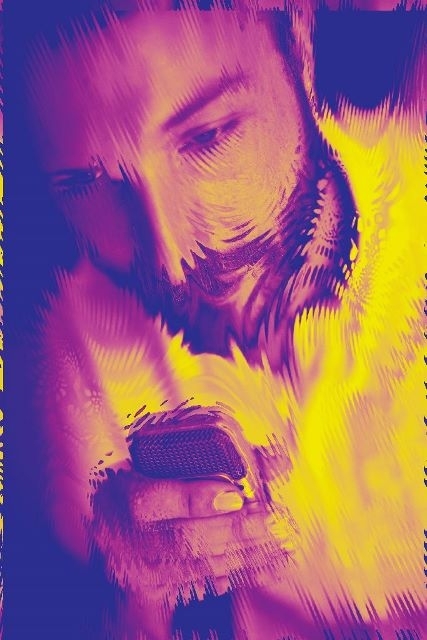
Day 1: Master Transmission
Luke’s voice is calm as he explains how the process will unfold. His voice is relaxing to listen to, and it already feels like the process of creating the piece will be something for just us, something rather intimate. He suggests I sit somewhere quiet, perhaps in the dark, and try to relax, with my eyes closed.
The piece will focus on two aspects of myself in which I lack confidence: my memory and my ability to focus. How does memory transform instruction? Forgetting is a natural part of that, and Luke not only allows for that but expects it; but I struggle with not being able to do a perfect job of his piece. Yet, if I remembered everything when he expects me to forget something then it would be a failure or mean that I’d cheated somehow.
I expect that internalizing this music will feel different from other pieces of music I’ve internalized. I hope so, anyway, because for me, the point is this: to explore a new way of creating a piece, to experience a different kind of performer–composer relationship. I can’t wait to see how it comes together.
Day 2: Transmission 1
Luke speaks for a minute or two, and then leaves a pause of a similar length before speaking again. I am to use the silences to process what he’s said, and meditate on the work we are creating together.
In this transmission, he shares the poetic images that form the basis of the piece. These images are beautiful and romantic: simple machines at night, half asleep, blinking and moving gently. Something is rather strange in this world, moving out of time—are watches being made here? The hands of these watches don’t move in seconds.
Immediately, I have ideas: gentle, beating multiphonics like the softly juddering conveyor belts he describes; easy aluminum-foil preparations to add to the machine feeling without being aggressive; slight overblowing to suggest the movement of the objects. I can already feel that this piece will work well: his language does encourage translation to the instrument. If I can’t see the piece forming, I can definitely hear certain kinds of sounds.
[Multiphonics (literally, many voices) refers to both the production of and process of producing multiple pitches, which on a wind instrument the player achieves by using a specific type of fingering combined with an adjustment of embouchure position and air flow. Multiphonics work by creating two separate air streams within the body of the instrument that alternate so rapidly that our ears cannot hear them as separate pitches: instead we hear a chord. These chords do not bend to the rules of traditional tonal harmony, but they are some of the most unique and beautiful sounds that the bass clarinet can produce. Beating is a dissonant pulsation produced by two or more of the notes of the multiphonic interacting with each other. For this piece, the composer and I experimented with multiphonics using very close intervals, with dissonant characteristics that produce interesting beatings and that can be produced at low volumes.]
Day 4: Transmission 2
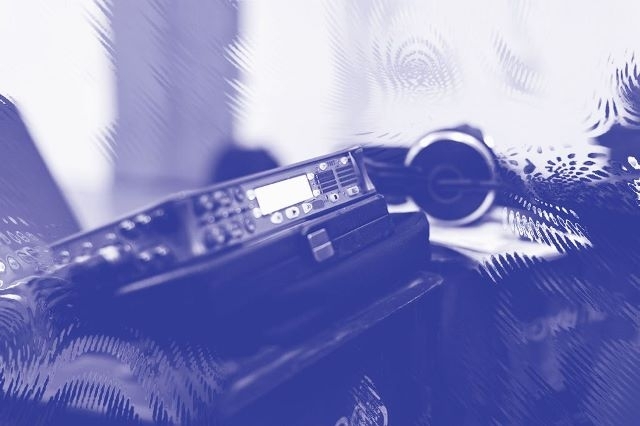

Luke warned me that this transmission would contain a lot more material. His voice remains as calm and relaxing as in the first transmission, but I can feel my heart beating faster. I distrust my memory. I’m worried that as the material becomes more specific, I’ll forget more.
In this transmission, he talks about a certain kind of bass-clarinet technique, that of underblowing to create soft multiphonics, as the basis for the makeup of the second type of material: a kind of humming that seems to exist in the air itself. I don’t want to go into too much detail about what to do with the material, so that the focus remains on my memory, but this involves certain intervals, connected with specific rhythms, and using the dyads (another name for these close multiphonics) to create a meandering pattern. Each phrase contains a certain number of notes, and each phrase is separated by a breath.
I’ve written about this kind of multiphonic on my blog so I feel reasonably confident about putting this material together, but it won’t be easy. Shifting between them requires subtle but precise changes in embouchure. It should sound ephemeral, but fragile.
Days 5–24: Back to real life
Here the reality of my life as a freelancer interrupted our progress. I had four concerts to play, much of that time on tour. But it was useful to take a break. Luke’s piece was in the back of my mind throughout, and this background rumination will surely have an interesting effect on the coming transmission . . .
Day 25: Transmission 3
Today I was distracted. I needed a break after the stressful concerts I’ve had to play recently and felt this transmission was an imposition. What has until now been a pleasure, is feeling like an obligation. I worry I won’t remember this transmission as well as the others, and feel somewhat disappointed with myself.
We are, anyway, back to the machines and onto a poetic description of how the second machine works; no descriptions of techniques or musical material, just poetry again this time. Again I feel irritated by the amount of time between each bit of transmitted material. The machine is so simple. Why all these breaks? I want to get up and get things done in the meantime: I am thinking about mundane things, like the laundry I need to do. I feel chained to the sofa where I sit in the dark.
I feel today that I am fighting myself more than I am fighting the composer.
Unusual feeling.
Day 26: A moment of worry
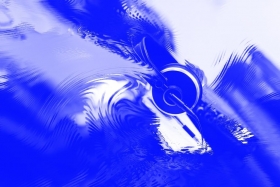

I’ve spoken to Luke about my struggle with the last transmission and, interestingly, he too found this one difficult and wrestled with the description of this particular machine. Somehow this has made me feel much more connected to it, and while I’m still not sure what kinds of sounds I’ll use, the prospect of returning to thinking about this machine doesn’t produce the same feeling of impatience.
Day 27: Practice as Research
Waiting for the next transmission, I’ve been spending some time practising the piece, which feels more akin to research than anything else. Selecting multiphonics that I think suit the two machines Luke’s described so far, I’ve been looking for quiet multiphonics that exhibit unusual characteristics. I’ve found one that I really love for the first machine: if I adjust my jaw pressure slightly, the beating changes rate, and I can further adjust this by using colour fingerings—ones that don’t change the pitch by more than a few cents, but significantly alter the sound quality. I can hear something of the strange, almost organic, machine that Luke describes. I also experimented with preparing the bell of the bass clarinet. If I place some aluminum foil over the bell and play the lowest pitch, a pleasing rattling is produced. It is, however, a little too loud and doesn’t balance well with the multiphonics. I don’t think this will make it into the piece.
Day 28: Practice after the last transmission
I’ve now received the last transmission, and have started to assemble the piece.
I find myself reflecting a lot on the role that memory is playing. I don’t really remember how Luke described the machines to me in the audio transmissions. As I listened, different kinds of bass-clarinet sounds came to mind. (Perhaps these ideas came too quickly. I’d often made decisions about what I wanted to do before the end of the transmission.) Now the musical actions prey so heavily on my mind, I can only remember small details about the machines. Strange to think that as I started this diary, I was worried about my powers of memory. Yet the images are so strong, and have so strongly and with such immediacy evoked for me the musical material of the piece, this hasn’t been a problem.
I’m happy with the decisions I’ve made for the second and third machines, too. For the second, I’m making use of my favourite multiphonic on the bass clarinet, which produces a major second from E ♭below middle C. It’s rare to find a multiphonic that produces such a close interval, and it also feels good to play; it produces such a gentle vibration that seems to resonate throughout the body. I love this multiphonic so much, I even have a fingering diagram for it tattooed on the wrist of my right arm: so when Luke described the second machine as a hand, my first thought was to make use of this sound.
The third machine—which Luke describes as a kind of rotating screw—moves very slowly. It struck me as being very much akin to the breath. I spend a lot of time considering the force of my own breath, how it works as a kind of machine to power not only my body but the music that I make. A slow, calm, stable breath focuses the mind and produces a clear, warm sound. To produce the musical material for this machine, I plan to simply breathe very calmly and deeply through the instrument, filtering the quality of the air sounds by using different combinations of fingerings.
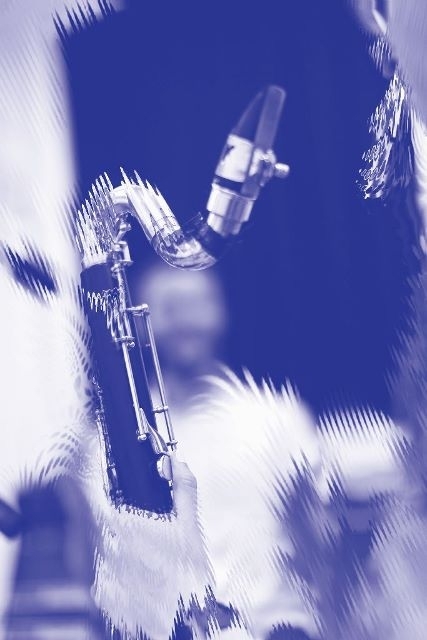
Day 34: Scratch recordings
The piece has now been assembled, more or less. I’ve been regularly sending recordings to Luke, who finally gets to hear what it sounds like. I can only imagine how strange that must be for him, to only have the faintest idea of what I might do, and then to be confronted with this recording. He’s been sending very detailed feedback. His changes never touch the material that I’ve come up with, he’s simply trying to refine the work a bit, to help me to focus on certain sounds, to slow down a little bit. I can hear such a difference from one day to the next.
Day 35: Rehearsing
Rehearsing in person with Luke is radically different from sending him recordings, and much more effective: because he’s able to interrupt me and ask me to repeat certain phrases or sections, we can much more rapidly shape the material. This collection of sounds I’ve slowly been sculpting has, in the course of a few hours in my living room, become a piece of music. Surprisingly, he also seems to know exactly what to say in order to shift my perception of the multiphonics. I often become a bit too involved in focusing on one pitch in order to make sure both of them sound. A few times today, Luke has asked me to focus on the other, changing the effect of the multiphonic and somehow bringing out something that I didn’t know was there. He’s just using his ears, but it ends up feeling like something quite special is taking place.
Day 36: In the room
We have now finished recording A Hushed Workshop. Luke decided to include, spoken by himself, the introductory text that appears at the beginning of each audio transmission. It set the mood, not only in the recording, but also in the studio. We dimmed the lights while we recorded, trying to really recreate the feel of the dark, slow-moving workshop Luke described in his audio transmissions. We struggled a little: the room wasn’t quite as well soundproofed as I’d hoped, and we had to regularly stop for the sound of planes, sitting as we were under Gatwick Airport flight paths.
A week or so after the recording took place, I happened to be playing a concert with Apartment House at Cafe Oto in London, a venue known for performances of new composed and improvised music, and Nickel came along to listen. Before the concert, he and I stood talking casually about A Hushed Workshop with the pianist of Apartment House, Philip Thomas. Thomas expressed a keen interest in Nickel’s work, and asked to see the score for his piano solo. That, however, is impossible: there is no score. Not only that, Thomas is forbidden to hear any of the transmissions unless he commits to learning the piece. Furthermore, Nickel doesn’t want him to hear Everett Hopfner’s recording of it either, as that might influence Thomas’ decisions were he to undertake it.
But I am keen to chime in, to advocate for Nickel’s work and to encourage Thomas to learn the piece. It requires blind trust in the composer (very unusual in classical music) and a small leap of faith, but the process has proven worthwhile and resulted in some beautiful music-making.
AUDIO: A Hushed Workshop. Composed by Luke Nickel. Performed by Heather Roche (bass clarinet). Recorded by Simon Reynell in London, 2018. (c) Nickel, SOCAN
ALL PHOTOS BY SAM WALTON.
You can find out about Luke Nickel's recent work here.
Buy the Winter 2018 issue here.
